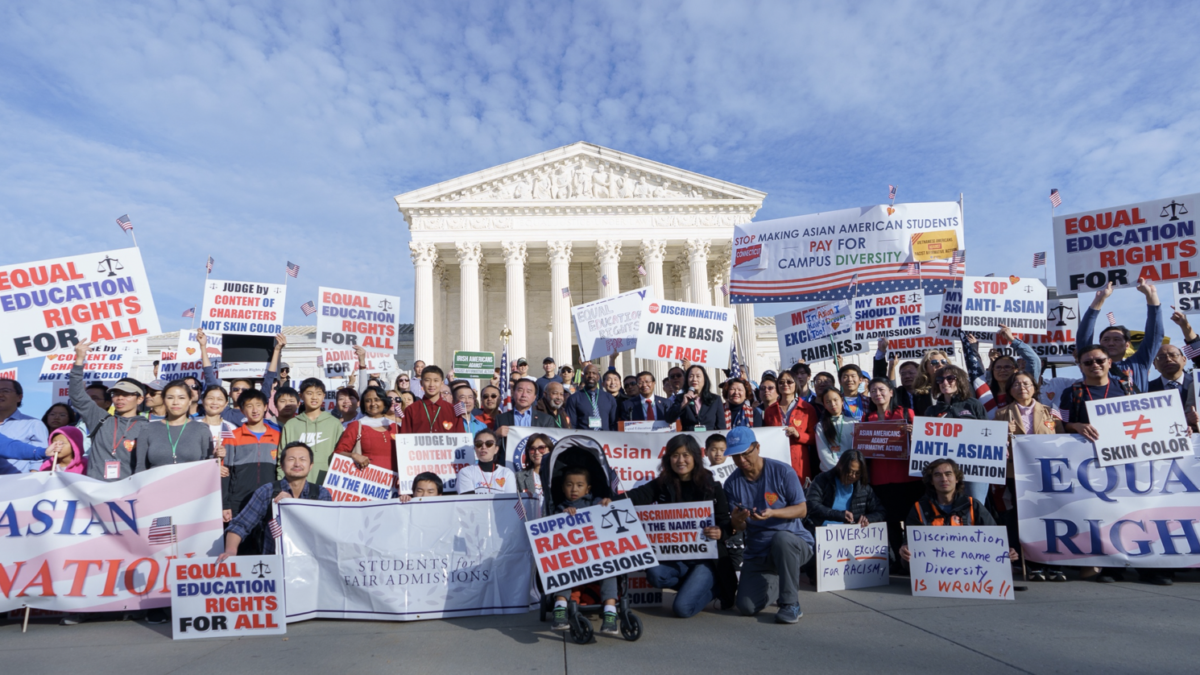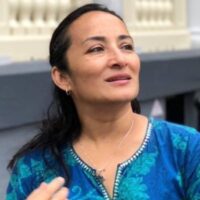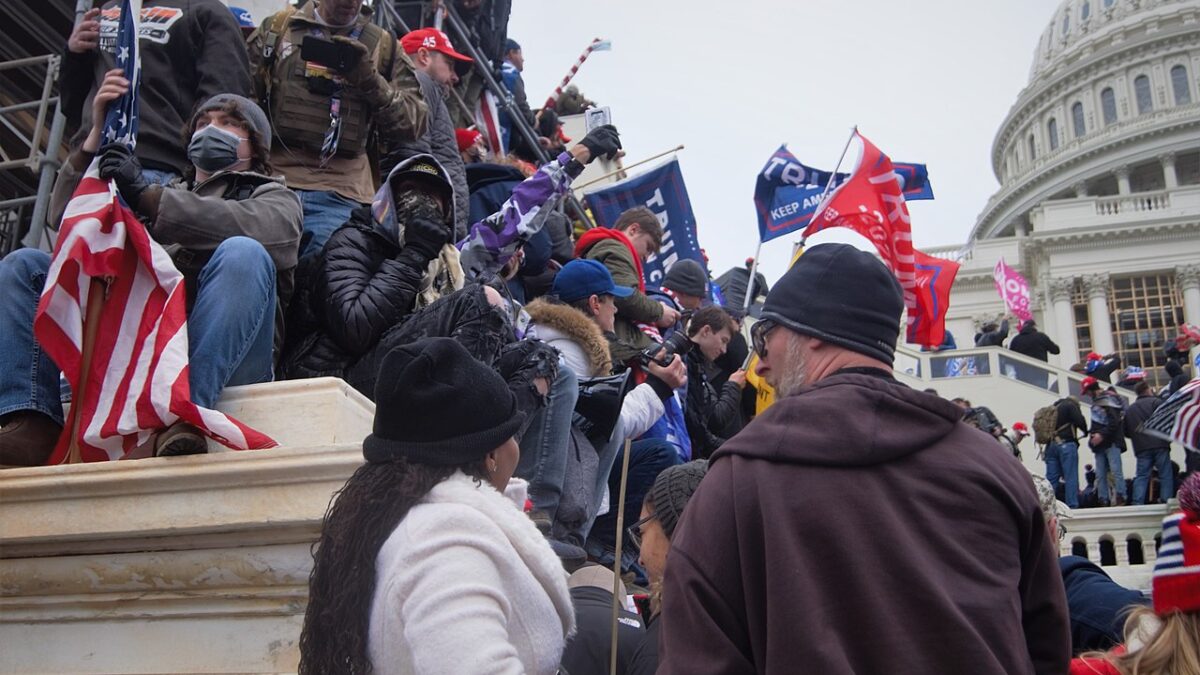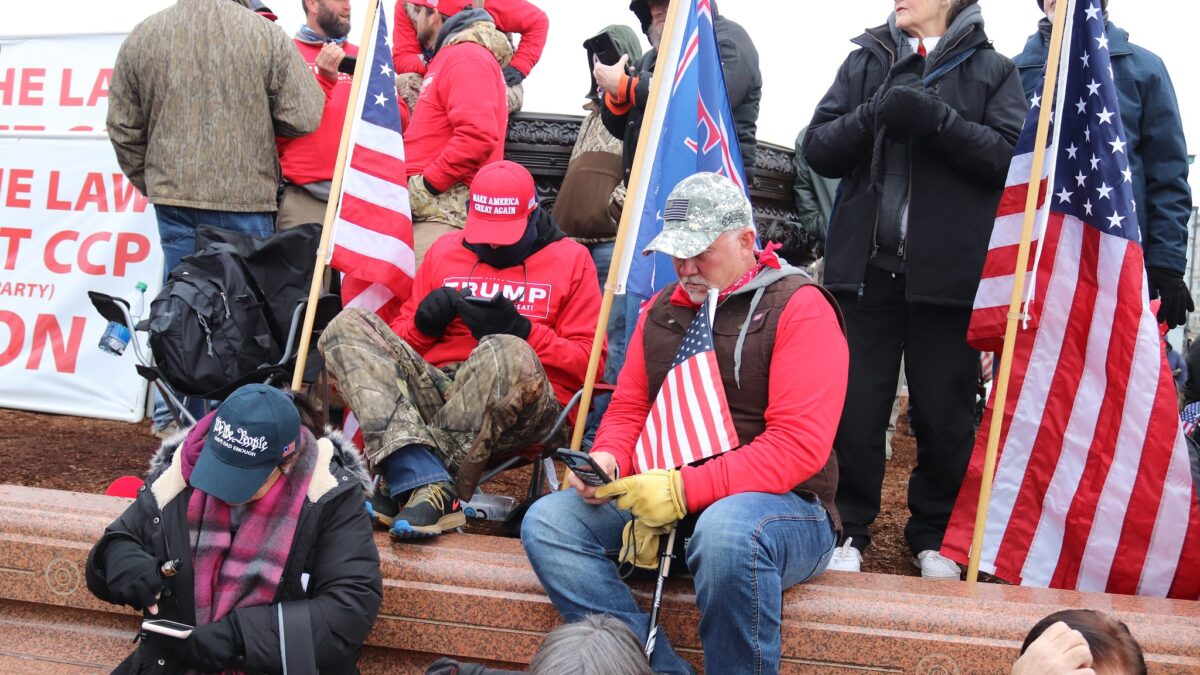WASHINGTON, D.C. — On Monday morning, I swept through the marbled halls of the Supreme Court of the United States, off First Street NE here in the nation’s capital, to enter the highest room of jurisprudence in the land. The sound of my footsteps muffled atop thick carpeting, the blinds on the massive windows mostly drawn and the room packed with rows upon rows of chairs, slowly filling.
A daughter of India who grew up in Morgantown, West Virginia, little could I know that over the next four-and-a-half-hours I would ride an emotional rollercoaster as three so-called “liberal” justices and four attorneys overlooked, erased, and tried to gaslight the truth of Asian Americans who face discrimination — or as the ideologues call it, “systemic racism” — in admissions to Harvard University and the University of North Carolina at Chapel Hill.
If not for fierce questioning from the court’s six conservative justices and the arguments of two attorneys for the plaintiffs, Students for Fair Admissions, Asian Americans would have been erased in the courtroom that day — much as they have been nationwide by “equity warriors” for whom we are an inconvenient minority. Instead, this is my prediction for the rulings, expected next year: a 6-2 victory by Asian American families and students over Harvard and a 6-3 win over the University of North Carolina at Chapel Hill.
In 332 pages of court transcripts, “diversity” was referenced 202 times, most of the time by the universities’ lawyers and the three justices that supported them, with “Asian” mentioned only 81 times. The universities’ lawyers, the sympathetic U.S. solicitor general, and the three like-minded justices spoke many times about supporting “students of color,” “minorities” and “diversity” but most often excluded Asian Americans. Ironically, the three liberal justices waxed eloquently about “diversity” without once noting the obvious: There wasn’t an Asian American justice beside them.
In the most defining moment of the day, Harvard’s attorney, Seth Waxman, tried to downplay “race” as a “determinative factor” in admissions to Harvard, noting that it was just like, “you know,” being “an oboe player in a year in which the Harvard-Ratcliffe orchestra needs an oboe player will be the tip.”
Chief Justice John Roberts shot that comparison down immediately.
“Yeah. We did not fight a civil war about oboe players,” he said firmly.
“I—,” Waxman tried to interrupt.
Roberts continued, undeterred. “We did fight a Civil War to eliminate racial discrimination, and that’s why it’s a matter of — of considerable concern.”
Across the country, parents listening to the proceedings laughed and cheered. The day before, many of those parents, with names like Jack Ouyang, Wai Wah Chin, Eva Guo, Suparna Dutta, Yuyan Zhou, and Harry Jackson, stood on the steps of the Supreme Court at an “Equal Education Rights for All” rally with signs promoting simple ideas. “Stop Anti-Asian Discrimination.” “Diversity ≠ Skin Color.” Together, over the past years, we had become accidental activists in the war on merit and Asian American students.
Since late August, parents had been meeting at 9 p.m. on Thursday nights over Zoom to ready for the rally, trading messages through the week on WeChat, Telegram, and Signal. CNN and Fox News featured their voices in their coverage of the case. Chinese-language newspapers put news of the rally on their front pages.
But inside the Supreme Court, to the lawyers for the universities and the three justices who supported them, it felt as if we were invisible.
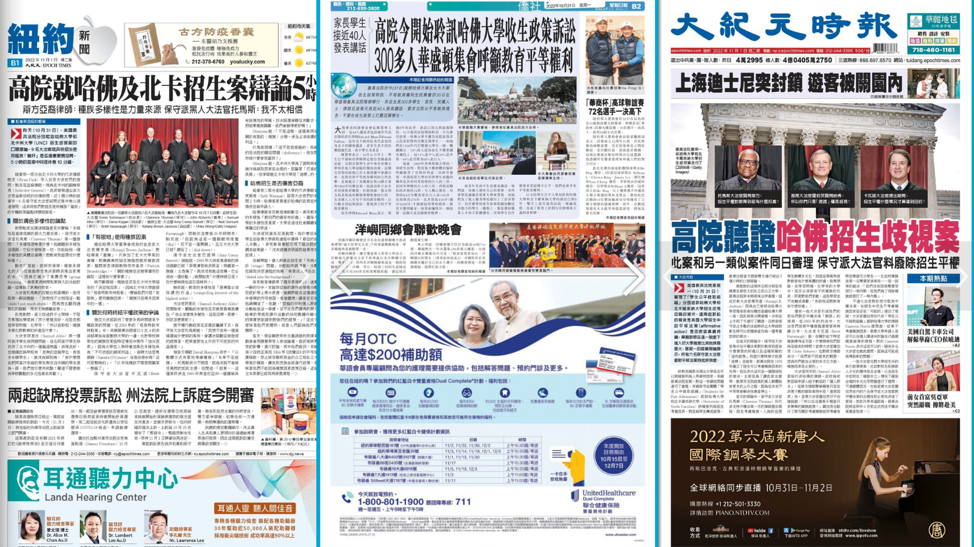
‘Gas lighters’
I’d first visited the nation’s capital decades ago as an 18-year-old intern in the summer of 1983, but this was my first time in the Supreme Court hearing room. It is about the size of a soccer field. At 57, I had to be a witness for the approximately 22 million Asian Americans living in the United States, about one of every 15 people, most hailing from 19 countries and the fastest-growing racial group in the U.S., according to Pew Research Center.
In response to a K-12 education system that has largely failed black and Hispanic students, officials at Harvard and UNC-Chapel Hill have allegedly rigged their admissions processes with “race-conscious” standards that discriminate against Asian American students to boost the number of black, Hispanic, and other “underrepresented minorities,” known today as “URMs.”
I brought two books into the Supreme Court with me: the big red book, “Critical Race Theory: The Key Writings That Formed the Movement,” and the yearbook for the class of 2021 from my son’s alma mater, Thomas Jefferson High School for Science and Technology, in Alexandria, Virginia, a magnet school known as “TJ,” where about 70 percent of the students are Asian American.
The yearbook theme was simple, “We know exactly how you feel.” Unfortunately, activists for the tenets of critical race theory don’t even pretend to want to know how we feel, and I witnessed this tone-deaf callousness from the three activist justices: Associate Justices Ketanji Brown Jackson, Elena Kagan, and Sonia Sotomayor. In my notebook, I penned their three names under “Gas Lighters.”
These three justices infused their questions, comments, and analysis with the politics and worldview of critical race theory, the ideology that teaches that society’s injustices must be corrected through the lens of race. Kagan wondered whether “people who have been kicked in the teeth by our society for centuries” can get a “thumb on the scale” instead of “white men.” She spoke about “our color blindness, whatever that means, because our society is not color blind in its effects.” Sotomayor punctuated many a question with “correct?” For example, she said schools are working to examine the “whole” student as “equals” — “correct?”
Quickly, Kagan found a kindred spirit in the country’s solicitor general, Elizabeth Prelogar, who spoke so sing-song it took a careful ear to recognize the disturbing worldview of critical race theory in her words. To the plaintiff’s argument on the “color-blind interpretation of the Constitution,” she said, “There’s nothing in history to support that.”
Under “Fierce Against Racism,” I wrote four names: Chief Justice John Roberts and Associate Justices Samuel Alito, Clarence Thomas, and Brett Kavanaugh. Under “Sympathetic” to the plaintiffs, I penned two names: Associate Justices Neil Gorsuch and Amy Coney Barrett.
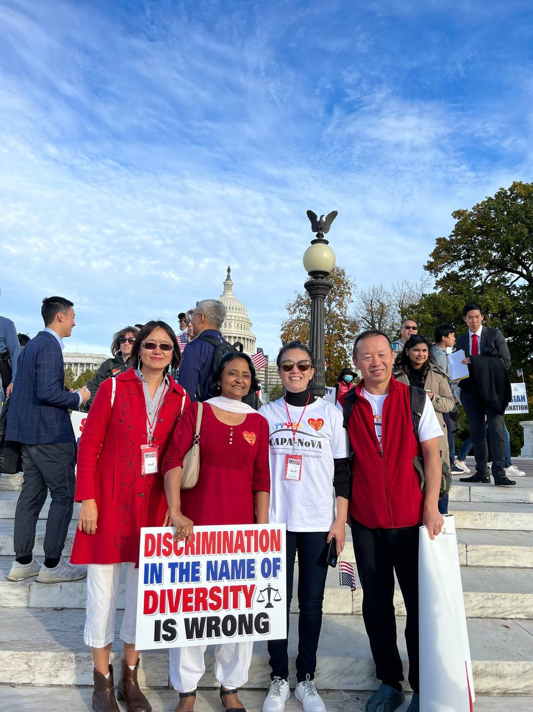
Prophets of critical race theory, such as author Ibram X. Kendi, have spread a toxic, unbelievable, and illiberal idea: “The only remedy to past discrimination is present discrimination.” Asian American students have been their sacrificial lambs in their racial experiment, with K-12 schools like TJ in the crosshairs of their war on merit.
In December 2020, after the killing of George Floyd turned educrats into activists, the 12-0 Democratic school board in Fairfax County, Virginia, eliminated the merit-based admissions tests to the school and replaced them with a “holistic” process that would increase the number of black, Hispanic, and other “URM” students, assigning “bonus points” to racially engineer the student body. A group we started, Coalition for TJ, filed a lawsuit with attorneys from a public-interest nonprofit, Pacific Legal Foundation.
In early 2022, a federal judge ruled that the new admissions process is “blatantly unconstitutional,” but the “UnFairfax” school board, as we like to call it, is appealing the case, and it will likely end up in the U.S. Supreme Court as early as fall 2023.
‘Asian’ Does Not Appear
On Monday, to hear the three “Gas Lighters” and the university’s lawyers, you wouldn’t have even known they were weighing the effect of systemic racism against Asian Americans.
In fact, at one point, Alito turned to David Hinojosa, an attorney representing current and former students at UNC-Chapel Hill supporting race in admissions, and said: “I was struck by the fact that the word ‘Asian’ does not appear one time in your brief. Yet Asians have been subject to de jure segregation. They have been subjected to many forms of mistreatment and discrimination, including internment.”
Like a magician, Hinojosa said there was no mention of “Asian” in his brief because, voila, a “record” of discrimination against Asian Americans “actually doesn’t exist.” He instructed the court to take it up with Harvard.
When Alito pressed the Harvard attorney, Waxman, on why Asian American students received a lower “personal score” than other students on character traits, including “integrity, courage, kindness, and empathy,” the Harvard lawyer did a tap-dance, saying the “syllogism” of the question was “wrong,” then asserted that the personal score difference is a “slight numerical disparity” that doesn’t reveal any “evidence of discrimination in admissions outcomes against Asian Americans,” because it’s “simply a number” that “fades into the background.”
Simply a number.
Alito pounced with the obvious question: “If it doesn’t matter, why do you do it?” Waxman dismissed the “personal score” as a “matter of triage” for overwhelmed admissions officers.
What about “affinity groups,” the controversial new tool for separating and segregating students in housing, discussion groups, and elsewhere in schools by race and other identity markers, asked Justice Amy Coney Barrett? Oh, they have “incredible benefits,” gushed Hinojosa.
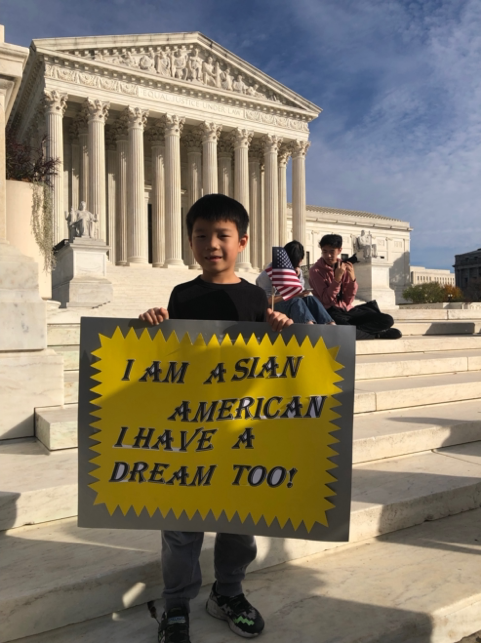
In the 1920s, Harvard President Lawrence Lowell discriminated in admissions against another group: Jewish students, because he believed there was a “Jew problem” with the overrepresentation of Jewish students at the school. In gaslighting back then, Harvard officials said they weren’t discriminating against Jewish students but just putting in place a “holistic” admissions process.
Now, in his closing remarks, Cameron Norris, an attorney for Students for Fair Admissions, said, “Harvard thankfully does say it is ashamed of its history of Jewish discrimination. I hope someday it says the same about how it’s treating Asians.”
